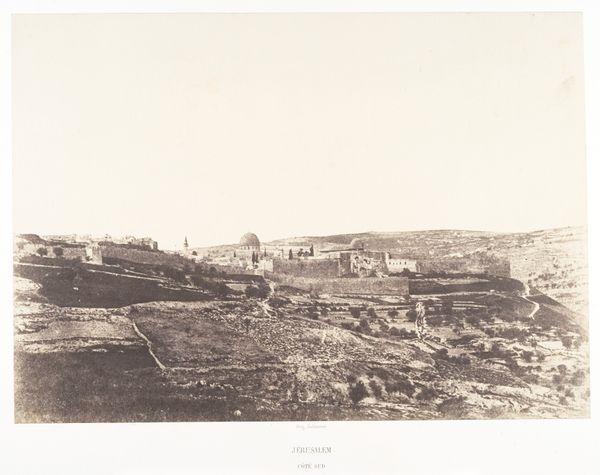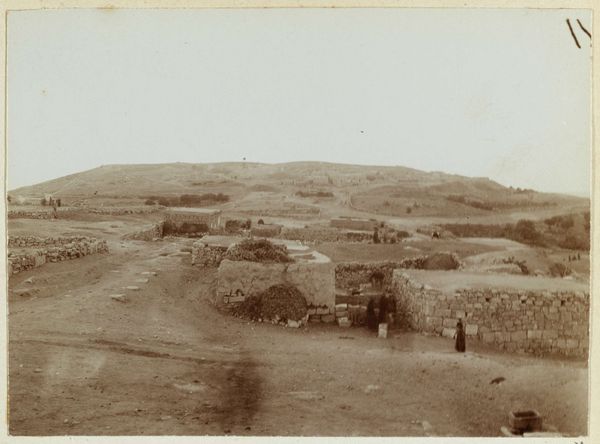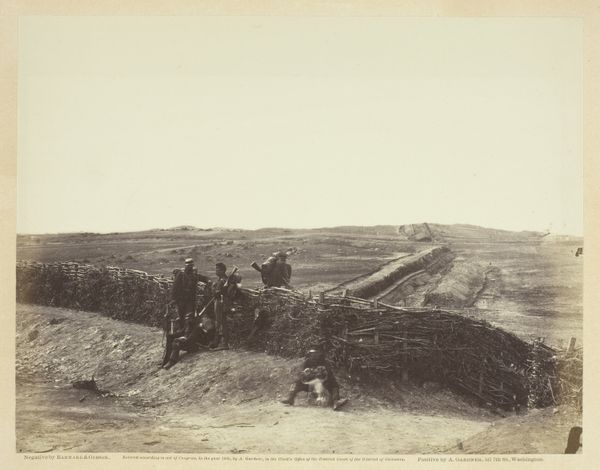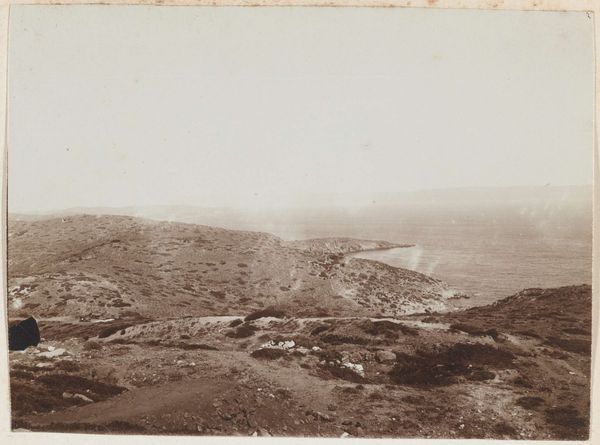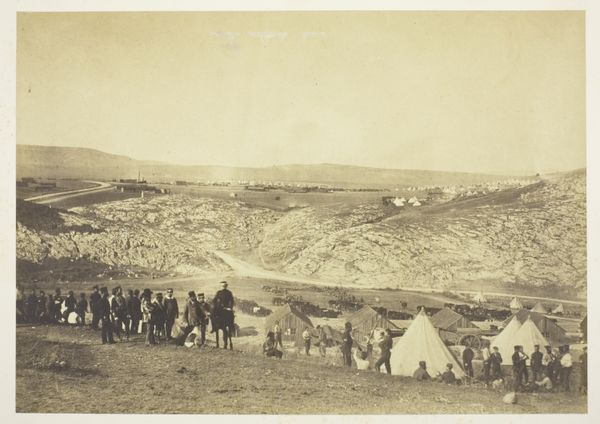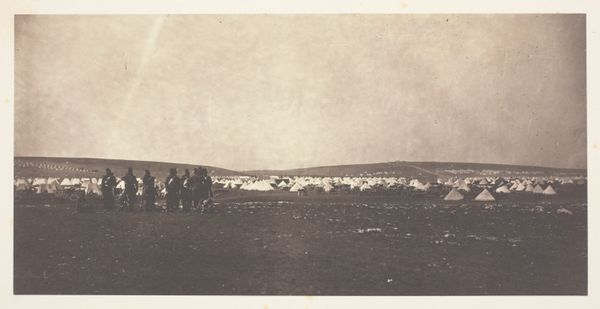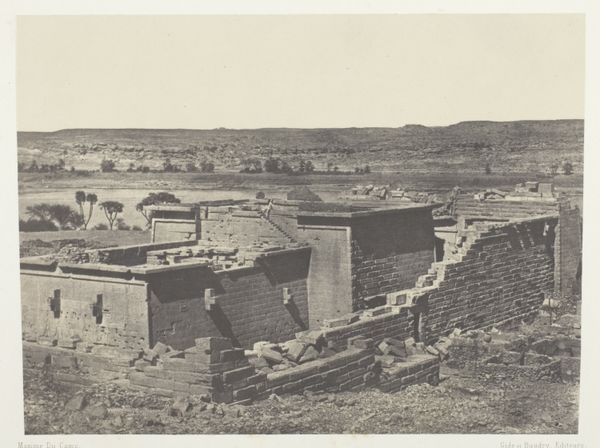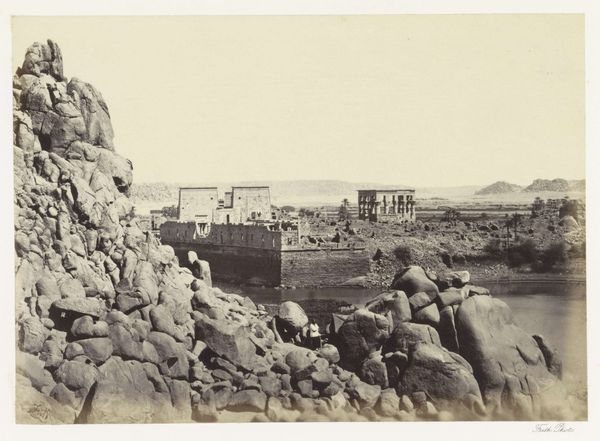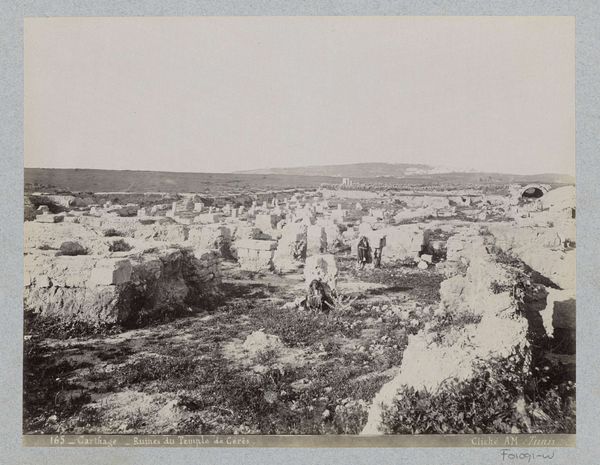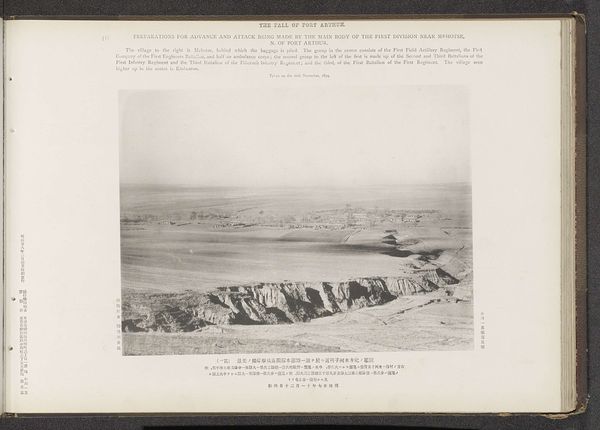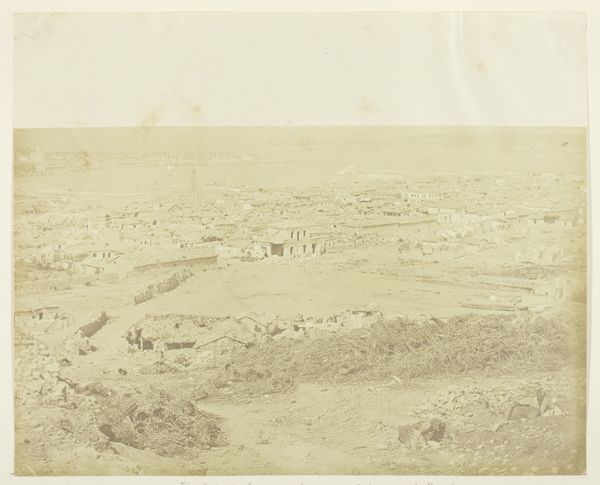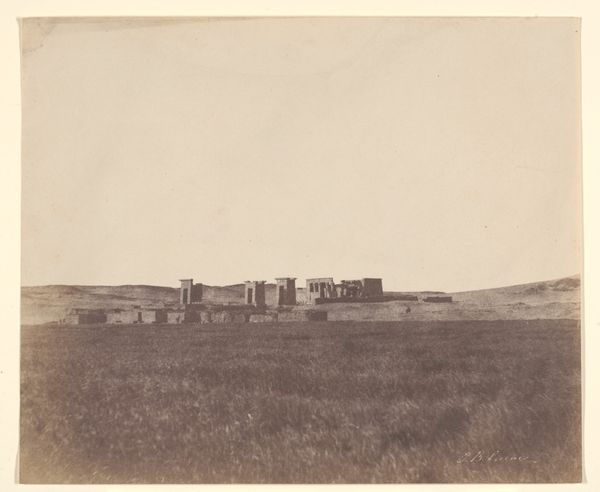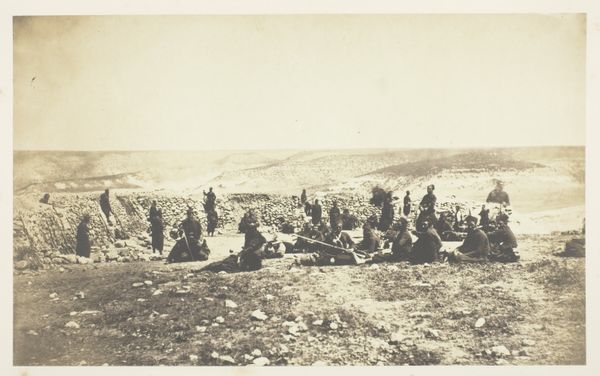
print, photography, gelatin-silver-print
# print
#
landscape
#
photography
#
gelatin-silver-print
#
history-painting
#
realism
Dimensions: height 224 mm, width 296 mm, height 248 mm, width 360 mm
Copyright: Rijks Museum: Open Domain
Editor: So, here we have "Franse kampement in Sebastopol tijdens de Krimoorlog" which translates to "French encampment in Sevastopol during the Crimean War", a gelatin silver print from sometime between 1854 and 1859, credited to James Robertson. It gives off quite a desolate, almost stark impression to me. What social commentary do you think it offers as a document of this conflict? Curator: That's a keen observation. I see this piece as offering insights into the representation of war in early photography. Robertson’s work moved away from romanticized battle scenes toward stark, unadorned documentation. How might this shift reflect changing public perceptions of war? Editor: It feels almost…uncomfortable to look at. No glory, just the grim reality. Was this intentional, a kind of protest through realism? Curator: Possibly. The Crimean War was one of the first major conflicts to be extensively photographed. Think about the influence figures like Roger Fenton had at the time. Photography provided a new level of immediacy, challenging official narratives. Do you see this work fitting within or pushing against such established modes of documenting war? Editor: I guess I assumed that early photography was always documentary, but thinking about Fenton and the narrative that can construct, I see how this piece could be a reaction against something. Curator: Exactly. Now consider the role of photography in shaping public opinion and political discourse during and after the war. Was this intended for widespread distribution, or did it primarily serve another purpose? Editor: That’s something I hadn’t thought of! So much for just assuming this image is just “objective truth”. Thanks! Curator: It highlights how historical context and social awareness help to decode any artwork's intended meaning. The social purpose is critical.
Comments
No comments
Be the first to comment and join the conversation on the ultimate creative platform.

